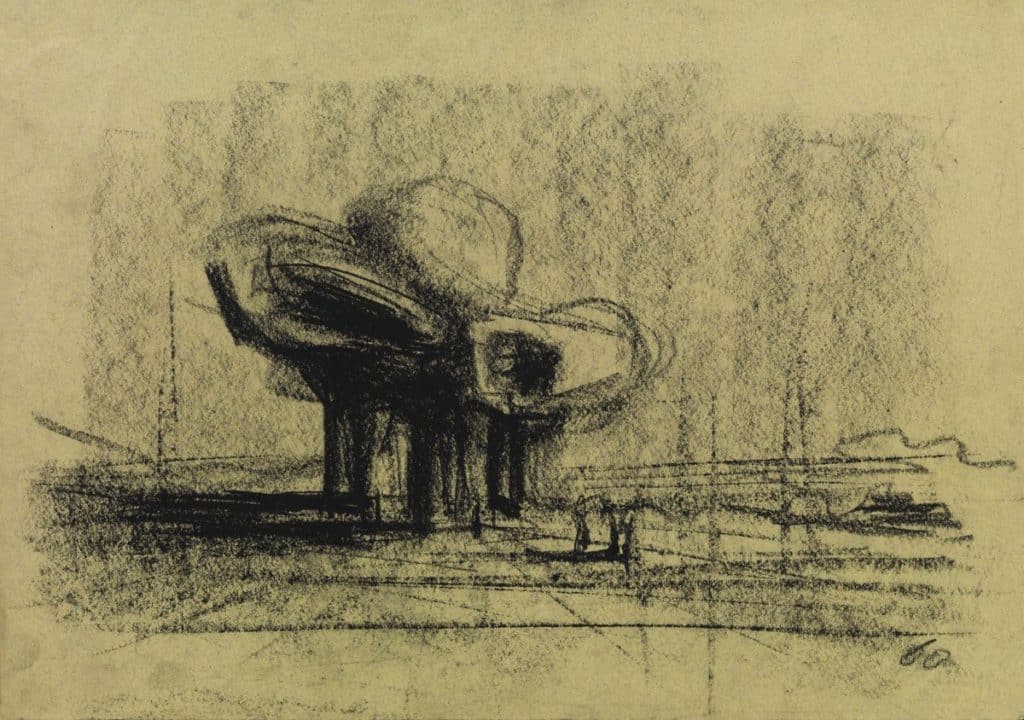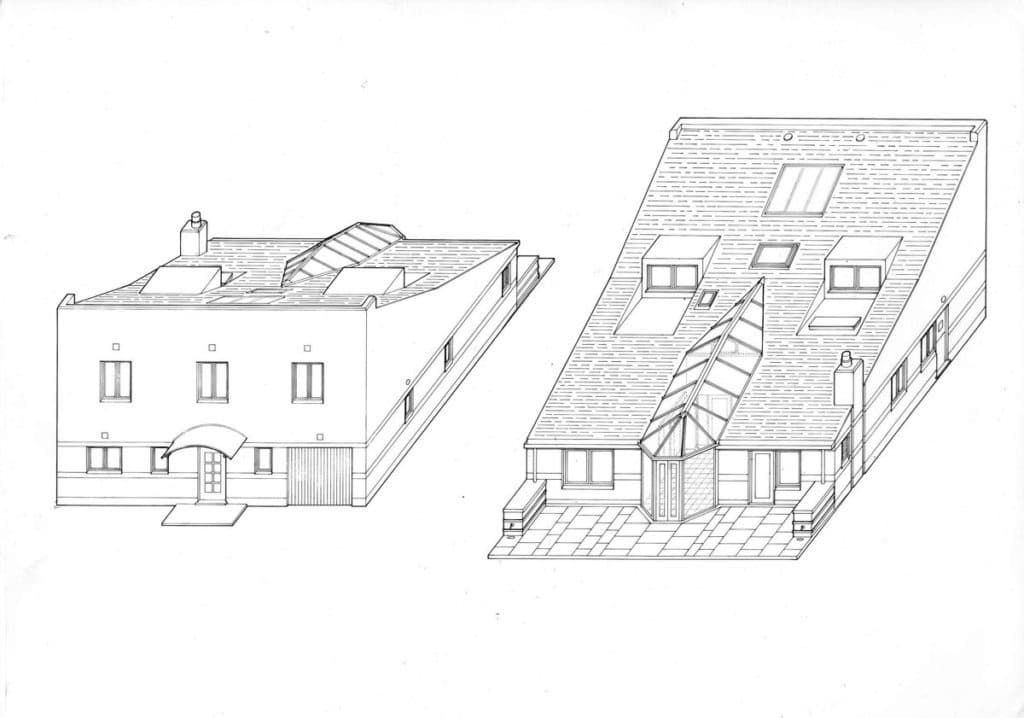A House for A Sculptor / A House for my Mother

In this drawing of his project for a house for a sculptor, Ugo La Pietra tries to criticise the boxiness of the standard house and the context of the city. Working to synthesise the forms and disciplines of art and architecture, he draws an enveloping free-form volume on pillars.

This is a drawing of a retirement home for my mother. The rural south side of the house looked onto a field leading down to the river Cam, the mono pitch roof sweeping down with skylights to let in the sun. The house fronted onto the road, at the edge of the city of Cambridge, with three windows on the upper floor giving this side an urban presence. She lived there happily for twelve years, and after the house was sold, the new owners destroyed it to make way for a larger building.
These two drawings are poles apart. One is based on fantasy, one on fact. The house on stalks is fantasy, the drawing is a work of art in itself: it does not represent a house that one could return to with the day’s shopping. The axonometric drawing represents an everyday reality, but gives it an element of fantasy by treating it abstractly – a view of it that one would never encounter in life.
